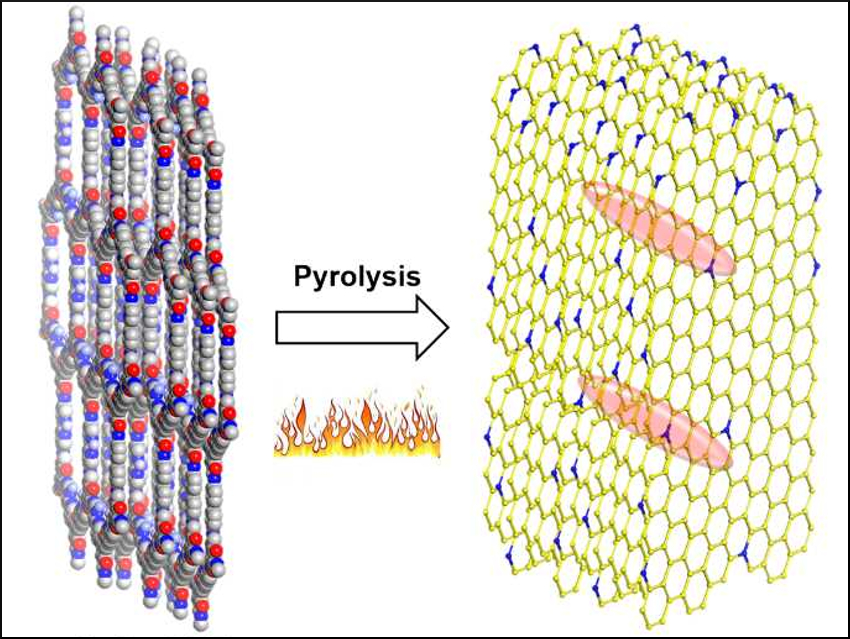Covalent organic frameworks (COFs) are a class of crystalline porous polymers with predictable and controllable structures. Various atoms (B, N, S, and O) in COFs are uniformly distributed in the skeletons, which make COFs ideal precursors for the construction of carbon-based electrocatalysts.
Xiaopeng Li, Shanghai Advanced Research Institute (SARI), Chinese Academy of Sciences, Yuhan Sun, SARI and ShanghaiTech University, China, and colleagues have synthesized a bimetallic COF as a precursor for multifunctional electrocatalysts. The team first synthesized a COF from 2,4,6‐trihydroxybenzene‐1,3,5‐tricarbaldehyde (Tp) and [2,2’‐bipyridine]‐5,5’‐diamine (Bpy) under solvothermal conditions. The resulting TP‐BPy‐COF was then modified using cobalt acetate and iron acetate to obtain a bimetallic COF (pictured left). This material was then carbonized under an N2 atmosphere.
The synthesized catalyst (pictured right) has a hierarchical pore structure and contains abundant FeCo alloy nanoparticles embedded within the carbon layers. It achieves an excellent multifunctional electrocatalytic activity toward the oxygen reduction reaction (ORR), the oxygen evolution reaction (OER), and the hydrogen evolution reaction (HER).
- Bimetallic Covalent Organic Frameworks for Constructing Multifunctional Electrocatalyst,
Dekun Wu, Qing Xu, Jing Qian, Xiaopeng Li, Yuhan Sun,
Chem. Eur. J. 2019.
https://doi.org/10.1002/chem.201805550




